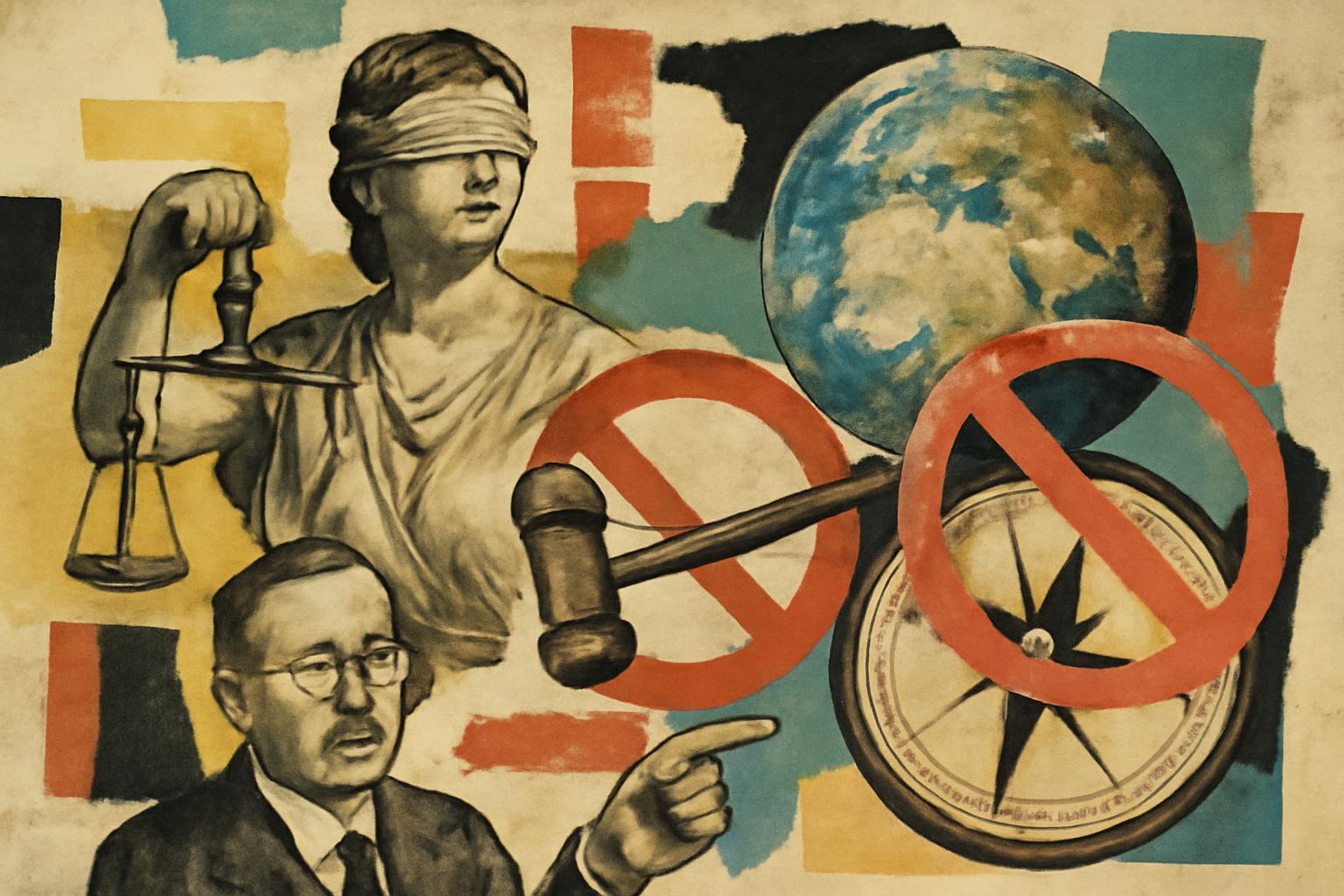Courts are becoming the arena where climate policy is argued, shaped, and sometimes imposed, even as the habit of appealing to rights claims or collective duties expands with every ruling. The recent sequence shows a pattern: cells of youth activism and environmental groups ride into Strasbourg, Karlsruhe, or Geneva with constitutional or human-rights rhetoric, and the courts either bend to the case for environmental protection or deny access on procedural or threshold grounds. Yet the overall drift is unmistakable: litigation is being treated as a primary engine of policy, not a last-resort corrective to legislative error.
From a Hayekian lens, the most troubling development is the retreat of market discovery and dispersed knowledge in favor of centralized direction. Climate targets and CO2 budgets are a quintessential attempt to coordinate vast, local decisions—from energy investment to consumer choices—through a single, top-down rule. The knowledge necessary to set optimal targets lives not in a court’s docket but in innumerable local experiments, price signals, and competitive innovations. When the state presumes to allocate resources across industries and generations, it substitutes political calculation for the practical knowledge of millions of actors operating under imperfect information. The constitutional and human-rights machinery may give the state a veneer of legitimacy, but it remains a mechanism for imposing coercive plans on voluntary exchanges and private property.
From Nozick’s entitlement framework, any expansion of coercive power to regulate emissions must be weighed against the sacrosanct rights of individuals and their private property. The minimum state, in his terms, protects life, liberty, and property; it does not presume to rob Peter to pay Paul for the sake of some abstract “future generation.” When courts validate or broaden environmental duties that impose burdens, taxes, or regulatory costs on emitters without fair compensation or clear consent, they are effectively violating the rights of those who must bear the consequences today. The duty to future generations, if it exists at all, cannot override current rights or be used to justify coercive redistribution. Rights are not fungible credits to be spent by judges or legislatures in the name of the communal good; they are inviolable constraints on state power.
Ayn Rand would insist that the moral legitimacy of policy rests on voluntary, rational self-interest and the primacy of individual rights over collectivist abstractions. The demand that we sacrifice present comforts to avert a nebulous future or to satisfy a purported social duty is a form of collectivist morality posing as prudence. Climate activism that seeks to reorder production and consumption through coercive means rests on a denial of individual sovereignty. The cure for perceived climate risk is not more coercion but more freedom: freer markets, stronger protections for private property, and the right of individuals and firms to innovate, fail, learn, and profit in ways that reduce risk without expropriating others’ labor. Group claims or association-backed suits may win favorable procedural latitude, but they do not grant new rights to override the rightful claims of individuals to live, work, and transact on their own terms.
The patterns noted—court-driven climate protection, the advantage accorded to associations, and government recalibrations of climate law—reveal a politics of power converging on the every-widening authority of the state. If the goal is genuine climate resilience, the libertarian answer is stark: roll back coercive tools, not expand them. Reclaim the terrain of rights by defending the primacy of private property, contract, and voluntary exchange. Address residual externalities not by global targets but by encouraging those who suffer harms to pursue remedies through robust tort and liability rules, when and only when there is a clear, traceable wrong done to a neighbor or a neighbor’s property.
In practice, that means resisting CO2 budgets and sector-wide mandates that relocate the cost of risk from the polluter to the innocent and constrain innovation. It means removing subsidies, subsidies masquerading as “green” policy, and any policy that predicates on redistributing wealth or power under the banner of environmental virtue. It means unleashing energy markets, privatizing mismanaged sectors, and letting price signals, property rights, and competitive entrepreneurship determine the path toward lower emissions. If climate risk is real—which it is—the moral response is not coercive justice against others but clarifying and enforcing the rights of individuals to invest, create, and bear the consequences of their choices.
Ultimately, the legal trend toward court-driven climate policy is a reminder that centralized power masquerades as protection. The libertarian case is clear and uncompromising: protect liberty, protect property, shrink the state, and let voluntary exchange solve problems through innovation. Only then can a society harness the knowledge dispersed among millions of actors and avoid the inevitable distortions that come when courts and legislatures pretend to plan the climate of the world.
